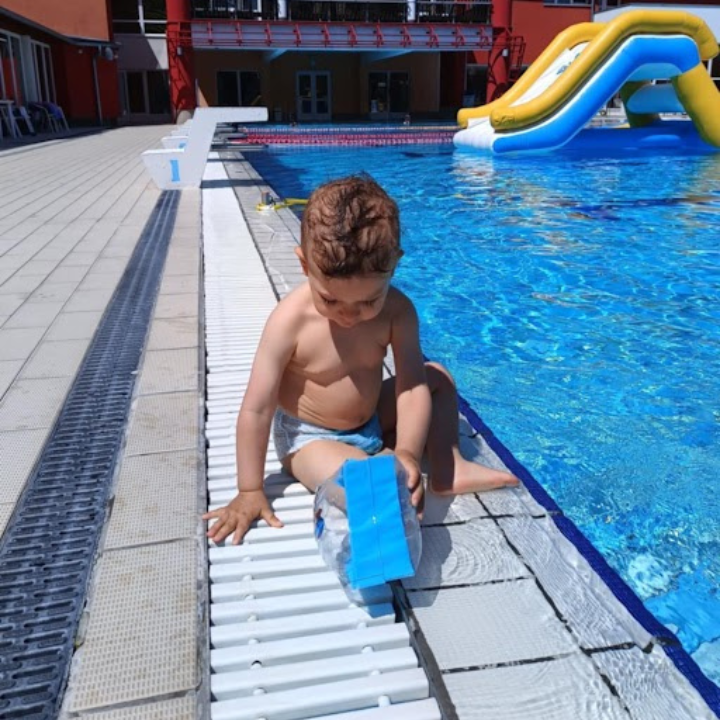Introducing your child to deep water is an important step in their development and swimming safety. This process can be challenging for both child and parent, but with patience and the right attitude it can also be very rewarding and fun. This article will give you some helpful hints and tips on how to gradually and safely introduce your child to deep water so that they feel confident and comfortable. Whether it's a pool, lake or sea, it's important to give your child a positive experience and support to help them overcome any fears and teach them the basics of safe swimming.
Summer is all about having fun, sunbathing and swimming all day long, and now that you are a parent, you can enjoy all of this with your offspring. Whether it's your backyard pool, a public pool, a pond or the ocean, there are a few things you should know before you let your child into the water.

1. Sunscreen is the first item on the list and the most important thing you should always have with you, it doesn't matter if it's a bit cloudy or the sun isn't that strong, babies have very sensitive skin and we need to protect it well.
2. A cap or hat - anything that protects the head from the sun is useful. If you have a toddler, you know how hard it is to put a hat on him, so it's good to choose one that won't be uncomfortable and will fit his head.
3. Baby swimsuits - not a big deal if your baby doesn't use swimsuits in your own pool, but if you swim somewhere else it would be quite uncomfortable if your baby created something unwanted, you know what I mean ;)
4. Swimming flotation devices - this is optional, but I highly recommend it. There are several options to choose from - arm, waist or torso. Just remember that even if you're using a flotation device, you can't leave your child unattended for even a second.
5. Towel or poncho - even if it's really warm outside, your baby will appreciate a nice snuggle in a towel after coming out of the water (in our case, with blue lips).
6. Drinking water and a snack - children are always hungry and it's better if they drink water other than that from the pond.

First, take the child to a pool or near open water where he or she can touch the water with feet and hands while keeping the body dry.
Then take him or her into shallow water. At this stage your baby may feel uncomfortable, so bring one of his favourite water toys, sit in the water with him, start clapping with hands or kicking feet in the water, your baby will soon start to imitate all your movements and it will be fun for him. When your baby is comfortable enough, it's time to move on.

The final stage is deep water, or the depth at which he cannot touch the bottom with his feet. For most babies, this is the most uncomfortable part of being in the water. The child will grab you around the neck and won't let go, this process takes several minutes for some children and several months for others. Sometimes your child will be happy and excited, sometimes they will be uncomfortable. Be patient! It is important that your baby feels that you are with them and that you will not let go if they want to hold on to you. Singing a favourite song or taking a favourite toy into the water can help.
As soon as your baby feels comfortable, you can hold him or her around your chest and place toys in front of them so they can reach for them. If they are holding a board with their hands, you can simulate kicking with their feet - babies love this. After a while they will start splashing with their arms and legs, so "dogy" swimming is the first step to real swimming.

Finally, it's important to remember that this is a long-term process - for some babies, being in the water will come naturally, but for most babies it won't be so easy. In any case, swimming should always be done in a playful way - not just for the baby, but for you too. Approach this activity in the same way as you would play with your child on land. Approach this activity in the same way as you would play with your child on land.